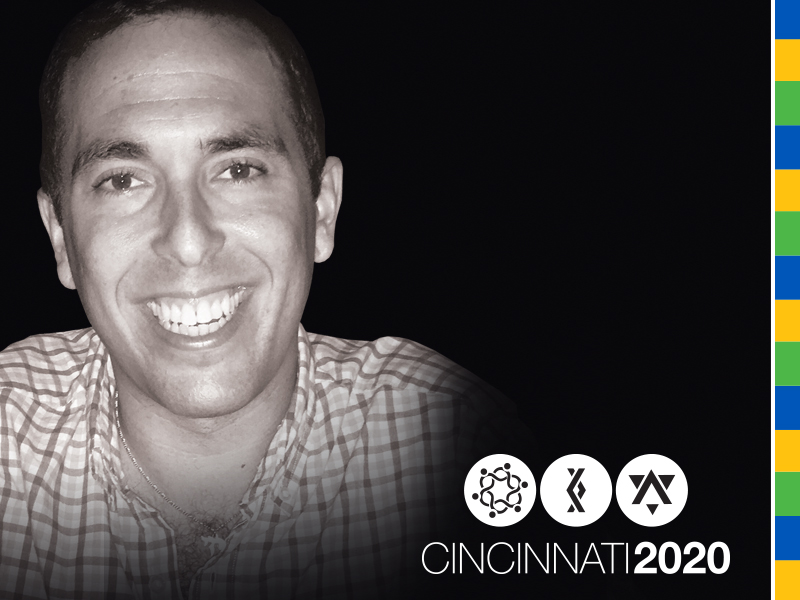Danielle V. Minson — Raising the Bar

Cincinnati 2020 in 2016: Eric Lamont
Each installment in this series features a different perspective on Cincinnati 2020, the Jewish community’s visionary plan for building an exceptional future.
This week, the Director of Community Building at the Jewish Federation of Cincinnati, Barbara Miller, and the chair of Cincinnati 2020, Tedd Friedman, talk with Eric Lamont, board member of the Young Adult Division of the Jewish Federation of Cincinnati, co-chair of the LEAD program, and board member of the Center for Holocaust and Humanity Education.
How did you first get involved in Cincinnati 2020?
I first learned of Cincinnati 2020 as part of my LEAD class five years ago. Since then, I have worked towards its goals as a YAD board member and continue to share its importance with others as the LEAD co-chair.
Why should Cincinnati 2020 be important to the community?
Cincinnati 2020’s ten-year timeframe and its significant scope provide an ideal opportunity to transition community leadership to the current generation of young adults. The structure of the plan ensures that this occurs while we continue to grow towards our Cincinnati 2020 goals, while ensuring the future leaders have some ownership over the direction. None of this is possible without the robust young adult engagement that stems from deep roots in the Jewish community.
Has Cincinnati 2020 been successful so far?
I can see that the community is rising to the challenge of Cincinnati 2020. The steps taken to deliver on the Cincinnati 2020 goals are allowing for new ideas and deeper collaboration. While it can be tough to measure changes in young adult engagement to date without objective data, I am certain that today’s work will serve as a roadmap to incubate and build new ideas that will further our engagement goals.
Did anything about Cincinnati 2020 or the collaboration itself surprise you?
It is noteworthy that Cincinnati has committed to something so ambitious: an evolution of what Jewish Cincinnati is and what it can be. The journey is long and requires constant attention, but the execution has been first rate, demonstrating that the community can deliver in the same manner as a for-profit company might for their ten-year plan.
What does the future of young adult engagement look like through the lens of Cincinnati 2020?
I envision a future where all young Jews are engaged with organizations that connect them to their passions and allow them to explore everything the Jewish community has to offer. Young adults often imagine a monolithic Cincinnati Jewish community, and can disengage if they happen to interact with an organization that is not what they are looking for or expect. The collaborative focus of Cincinnati 2020 will ensure an opportunity is not lost, resulting in greater and more meaningful connections.
What do you hope the community accomplishes through Cincinnati 2020 in the next five years?
I wish to see the community continue to collaborate, innovate, and create a path for all Jewish young adults to experience the vibrancy of the Jewish community. They will then understand that the individual organizations are the foundation for the amazing things we are doing and that young adult support is critical for success.

